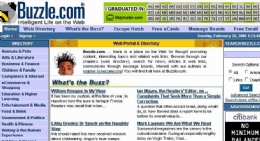The Portal Development


Enlarge Image
On Intranet or Internet, Marketing or HR, Enterprise or B2B – the importance of portal is rapidly increasing. Considering portal as product has invited numerous players. Either with collaboration or independently – portal market is full of competitive players.
However portal based on Java platform has attracted many players as well as customers. Microsoft’s Share point, Biz talk and Commerce server on front of serving enterprise solutions have not proved like its Office or OS.
What is Portal?
Portal is an enterprise.
Single window to access details of your enterprise
Portal is a web site or service that offers a broad array of resources and services, such as e-mail, forums, search engines, and on-line shopping malls. The first Web portals were online services, such as AOL, that provided access to the Web, but by now most of the traditional search engines have transformed themselves into Web portals to attract and keep a larger audience. – Intermark.org
According to Portal Standard (JSR 168 specification), a portal is web based application that commonly provides personalization, single sign-on and content aggregation from different sources and it hosts the presentation layer of information systems. Aggregation is the action of integrating content from different sources within web page. A portal may have sophisticated personalization features to provide customized content to users. Portal pages may have different sets of portlets creating content for different users.
Portal and Open Source Tools
The major features or components of Portal are:
1. Content management
2. Enterprise search
3. Taxonomy management
4. Single sign-on
5. Business process management
6. Instant messaging
7. Collaboration
8. Directory services
Portal building using open sources is quite interesting and exciting experience. The ultimate is – it is free. This article is to summarize available open sources for portal development. For further reference in detail, please go through “Professional Portal Development with Open Source Tools” and “Suggested Links”.
JSR 168 defines a standard Java portlet API, a portlet container, and the contract between the API and the container. JSR 168 experts include Apache Software Foundation, Art Technology Group, BEA Systems, Boeing, Borland Software Corporation, BroadVision, Inc., Citrix Systems, Inc. EDS, Epicentric, Fujitsu Limited, Hitachi, Ltd., IBM, Novell Inc., Oracle, SAP AG, SAS Institute, Sun Microsystems, Inc., Sybase and TIBCO Software Inc.
Specification
Portlet API an extension to Servlet specification as portlet container (further up gradation to web container.) Portlet is nothing but little window into your enterprise. JSR 168 establishes a standard API for creating portlets, the integration component between applications and portals that enables delivery of an application through a portal.
Portlet Config, Generic Portlet, Action Request & Action Response, Portlet Exception, Validator Exception, Portlet URL, Portlet Mode, Render Request & Render Response are key objects to build Portlet further.
Enterprise search
Lucene is open source Search Engine API. Implementing set of classes given under Search Engine API enables you to add Lucene Search Engine into your portal. Analyzer, Index Writer, Directory services and Querying sort out the search engine procedure.
Java Apache Mail Enterprise Server (JAMES) is an excellent enterprise mail solution. James is further 100% compatible with Java Mail API and Java 2 platform. Further James is flexible, powerful and easy to configure. Seven core classes including Session, Message, Address, Authentication, Transport, Store an Folder make up Java Mail API.
Database
Connecting to database through Java Database Connectivity (JDBC) or embedded SQL, Object relational mapping tool e.g. Object Relational Bridge enables you to store java objects in relational database. OJB features ODMG API, JDO API, OTM Layer and Persistence Broker API with best suit of your needs. This supports nearly fourteen database platforms including MS SQL, MS Access, DB2, Oracle, Sybase and Sapdb.
Content Management
Apache’s Jakarta Slide is most suited content management and integration system available in open sources. Internal & External architecture, Transaction management, namespace and domain are five pillars of Slide architecture. Domain and namespace are mainly used for security & authorization purposes.
Security
Authentication, Single Sign On, Authorization, Confidentiality, Integrity and Non-repudiation are well managed with JSR 168 for your portal.
Taxonomies
Taxonomies are quickly gaining prominence as navigational tools in portals and with good reason. Taxonomies, or classification schemes, provide a high-level view of the content and other resources available in a portal.
Dom4j is available open source product to manage taxonomies efficiently through parcing and manipulating content that resides in XML. It also supports JAXP, SAX, DOM and XSLT.
Open Source Portal Servers
Here are few examples of Open Source Portal Servers written in Java.
1. Liferay
2. Exo
3. JA-SIG uPortal
4. Redhat Portal Server
5. Jakarta Jetspeed
6. CoCoon
7. Lutece
The Market of Portal Development
The market of portal development according to IDC is to reach at US $3.1 billion by 2006.
Plumtree is participating in the development of two portlet standards, Java Specification Request (JSR) 168 and Web Services for Remote Portals (WSRP).
Other vendors include Accenture, Apache Software Foundation, BEA, Boeing, Borland, Bowstreet, Cap Gemini Ernst & Young, Citrix, Computer Associates, CoreMedia, DaimlerChrysler, Documentum, Enformia Ltd, Epicentric, Hewlett-Packard, Interwoven, Macromedia, McDonald Bradley, Oracle, SAP, Silverstream, Sybase, Tarantella, Inc, Vignette.
Source & Further Reading : Professional Portal Development with Open Source Tools By Richardson, Avondolio, Vitale, Len and Smith.

